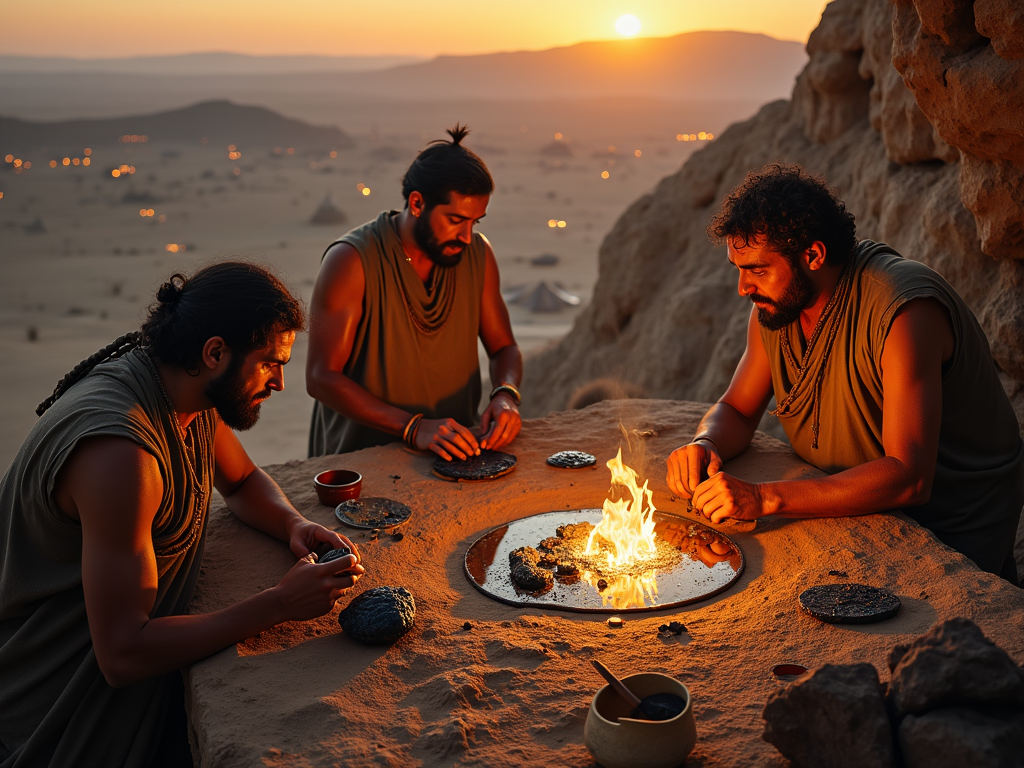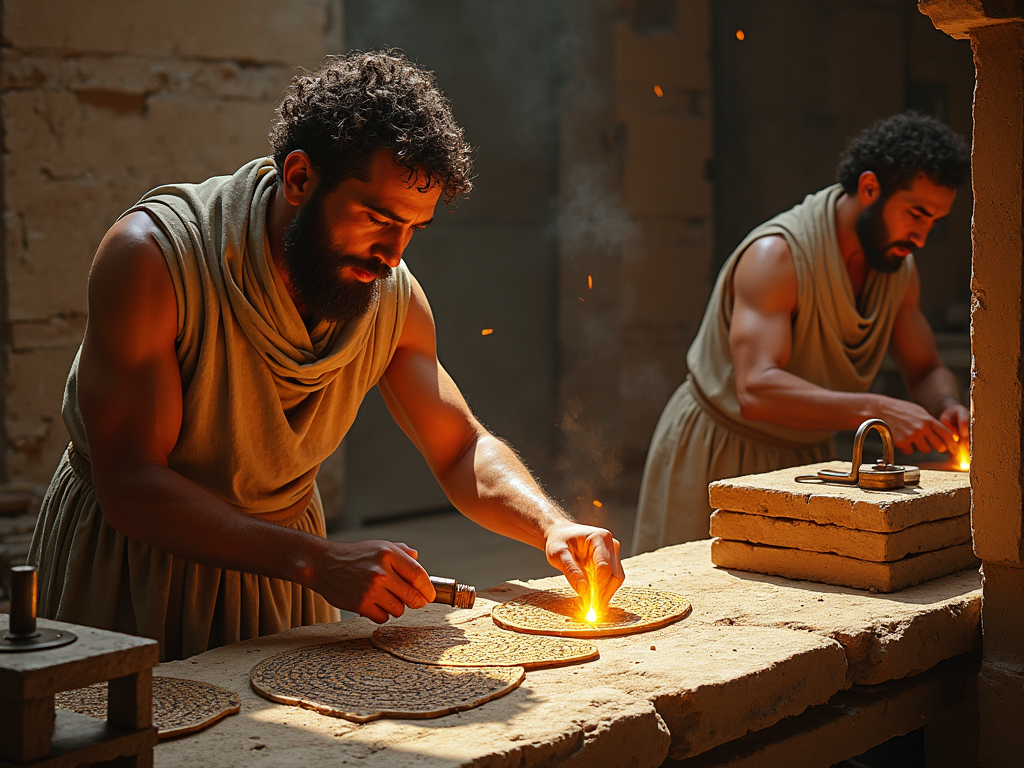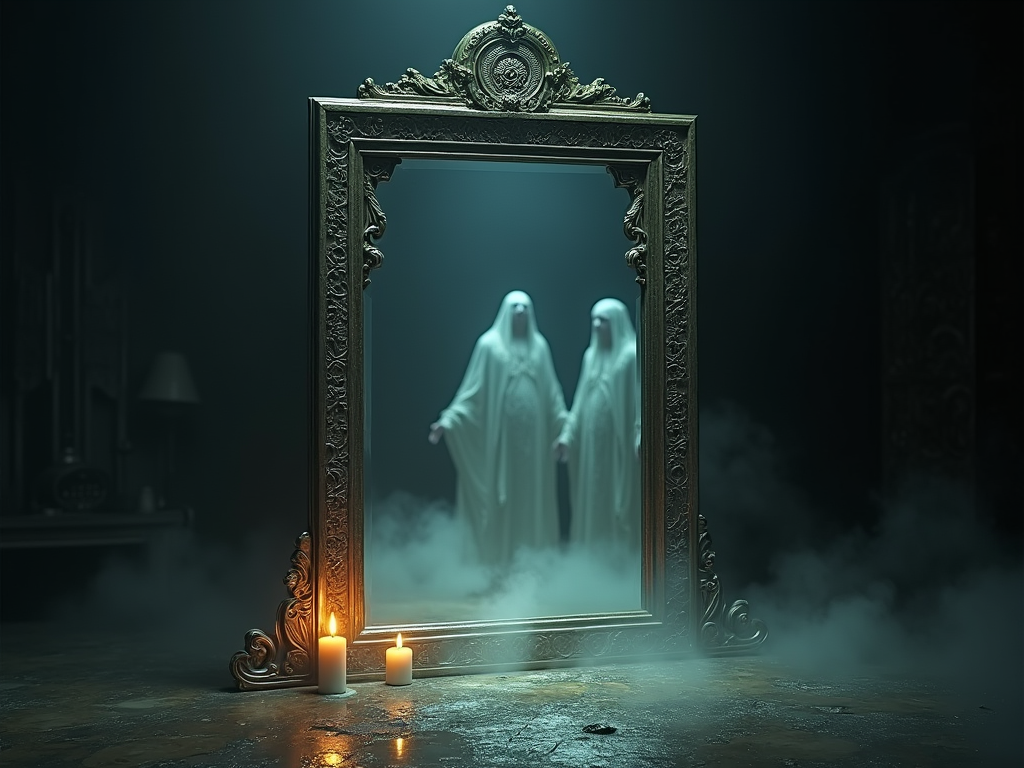
Key Takeaways
- The first mirrors were made from polished obsidian stone in what is now modern Turkey around 6000 BCE.
- Mesopotamian craftspeople advanced mirror technology by using polished copper around 4000 BCE.
- Ancient mirrors served primarily as spiritual tools rather than devices for checking appearance.
- Mirrors were considered sacred objects used in religious ceremonies and burial practices.
- The evolution of mirror-making demonstrated humanity’s growing mastery over materials and technological advancement.
From Stone to Spiritual: The Surprising Origins of Mirrors
Early Mirror Materials and Development
The story of mirrors started with a simple piece of volcanic glass. These first reflective surfaces began their journey in Anatolia – what’s now modern Turkey – where people crafted mirrors from polished obsidian stone around 6000 BCE. I’ve found that ancient mirror technology was far less sophisticated than what we see today, yet it marked a revolutionary step in human development.
Archaeological findings at Çatalhöyük have unearthed these primitive obsidian mirrors, though their reflective capabilities were basic at best. The dark, glossy surface of obsidian could only produce murky reflections – a far cry from the crystal-clear images we’re used to seeing in modern mirrors. Still, these early innovations laid the groundwork for how mirrors would transform society in the centuries to come.
Evolution Across Ancient Civilizations
Progress in mirror-making took a significant leap around 4000 BCE when Mesopotamian craftspeople began using polished copper. This metallic innovation offered better reflectivity than its stone predecessors, though still nowhere near today’s standards. The practice of creating reflective surfaces spread across continents, with distinct developments emerging in different regions.
In Central and South America, around 2000 BCE, civilizations returned to using polished stone for their mirrors, developing their own unique techniques. These variations in mirror-making methods across different cultures show how deeply ingrained the desire for self-reflection was in human society. The spiritual significance of these early mirrors was profound – they weren’t just tools for checking one’s appearance but were often seen as portals to the spiritual realm, used in religious ceremonies and rituals.
The advancement of mirror technology wasn’t just about vanity – it represented humanity’s growing mastery over materials and our increasing ability to manipulate the natural world for practical purposes. Each improvement in mirror-making techniques brought us closer to the clear, precise reflections we take for granted today.

Sacred Reflections: How Ancient Civilizations Used Mirrors for Divine Connection
Religious Significance and Divine Symbolism
The earliest mirrors served a far greater purpose than simple vanity – they created powerful connections between humans and their deities. Ancient civilizations saw these reflective surfaces as sacred portals, bridging the gap between earthly existence and divine realms. I’ve discovered that mirrors profoundly influenced ancient spiritual practices in ways that shaped human civilization.
In ancient Egypt, copper and bronze mirrors held deep spiritual significance, directly connecting worshippers to the sun god Ra and the goddess Hathor. These sacred objects went beyond mere reflection – they symbolized divine light and protection. The ancient Egyptians placed such high value on these mirrors that they became essential items in burial practices, believing they’d illuminate the deceased’s path through the afterlife.
Religious connections to mirrors extended well beyond Egypt’s borders. In Mesopotamia, mirrors played a central role in worship practices dedicated to Shamash, their powerful sun deity. These weren’t just decorative items – they served as crucial tools in religious ceremonies and ritual practices.
Archaeological findings paint a fascinating picture of how ancient civilizations integrated mirrors into their spiritual lives. Here’s what the evidence tells us about their sacred uses:
- Burial companions for the deceased, ensuring light and protection in the afterlife
- Ceremonial tools used in temple rituals and religious celebrations
- Sacred offerings placed in royal tombs alongside other precious items
- Symbolic representations of divine light and celestial bodies
- Protective talismans believed to ward off evil spirits
The craftsmanship of these ancient mirrors matched their spiritual importance. Through careful metalwork, artisans created reflective surfaces with distinct properties, each designed to serve specific ceremonial purposes. The level of detail in these artifacts shows just how central mirrors were to ancient religious practices.
These early spiritual associations with mirrors left lasting impressions on human culture. I can trace many modern superstitions and beliefs about mirrors directly back to these ancient traditions. From the fear of breaking mirrors to their use in meditation and spiritual practices, these early religious connections continue to influence how we think about and interact with reflective surfaces today.
Late period Egyptian texts tell us that mirrors were so vital to religious practice that they became standardized parts of temple inventories. Priests used them in daily rituals, believing they could capture and redirect divine energy. This practice spread across ancient civilizations, with similar mirror-based ceremonies documented in early Chinese, Greek, and Roman religious traditions.
Understanding these original spiritual purposes helps explain why mirrors remain such powerful symbols in modern culture. Their evolution from sacred objects to everyday items marks a fascinating journey through human history, though their mystical associations persist in many cultures today.
The Art of Ancient Mirror-Making
Early Metallurgical Innovations
The path to creating reflective surfaces started with pure necessity and human ingenuity. The first mirrors emerged from ancient Mesopotamian craftsmen around 4000 BCE, who discovered that polished copper could capture reflections. These early artisans hammered copper into thin sheets, then spent countless hours polishing the surface until it achieved a mirror-like finish.
Egyptian metalworkers took this craft to new heights by switching to bronze – a breakthrough that dramatically improved reflection quality. This shift to bronze wasn’t just about better reflections; it made mirrors more durable and resistant to tarnishing. I’ve found that understanding these early techniques helps appreciate how mirrors transformed ancient civilizations and their self-perception.
Chinese Mirror-Making Excellence
Chinese craftsmen made a significant leap forward with the creation of speculum metal, a specialized high-tin bronze alloy. This innovation produced mirrors with exceptional reflective properties that surpassed anything previously made. During the Han Dynasty (202 BCE – 220 CE), mirror-making turned into an art form that blended function with cultural significance.
The most striking examples were TLV mirrors, named for the distinctive patterns that decorated their backs. These weren’t just simple reflective tools – they incorporated complex cosmic designs that symbolized the Chinese understanding of the universe. Each mirror served as both a practical tool and a piece of art, showing how mirrors held deep cultural significance in ancient societies.
The manufacturing process of these ancient mirrors required specific steps:
- Careful selection and mixing of metals to create the perfect alloy
- Casting the mirror in specially designed molds
- Extended periods of polishing using progressively finer materials
- Adding decorative elements through casting or engraving
- Final burnishing to achieve the highest possible shine
These ancient techniques laid the groundwork for modern mirror-making methods, though today’s processes use different materials and technology. The basic principles of achieving a perfect reflective surface remain surprisingly similar to those developed thousands of years ago.

Mirrors as Portals to the Spirit World
Throughout history, mirrors have served as much more than simple reflective surfaces – they’ve acted as gateways between our physical world and the spiritual realm. As I explore the fascinating impact of mirrors on human civilization, their mystical applications stand out as particularly significant.
Ancient Divination Practices
I’ve found that mirrors played a central role in divination practices across numerous ancient civilizations. The art of scrying – gazing into reflective surfaces to receive spiritual messages – relied heavily on mirrors as tools for prophecy. Chinese mystics used special bronze mirrors in their spiritual ceremonies, believing these objects could connect them with divine forces. They’d spend hours peering into polished surfaces, interpreting the patterns and reflections as messages from the spirit world.
Protective Powers and Cultural Significance
The protective qualities of mirrors have been a constant theme across different societies. Chinese customs emphasized placing mirrors above doorways to deflect negative energy and evil spirits. This practice stemmed from the belief that malevolent entities would see their own reflection and flee in terror. People also carried small mirrors as personal talismans, considering them powerful shields against supernatural harm.
Here are key ways different cultures used mirrors for spiritual protection:
- Ancient Egyptians placed mirrors in tombs to capture evil spirits
- Japanese Shinto shrines featured sacred mirrors to house divine spirits
- Celtic druids used mirrors in ceremonies to ward off dark forces
- Roman soldiers attached mirrors to their shields, believing they provided spiritual protection
- Chinese feng shui practitioners positioned mirrors to redirect negative energy
The relationship between mirrors and spirituality wasn’t limited to protection – many cultures saw them as portals for communication with ancestors. Some traditions warned against looking into mirrors at night, fearing this might inadvertently open doorways to the spirit world. These beliefs have left lasting impressions on modern mirror superstitions, including the common fear of breaking mirrors bringing bad luck.
The mystical properties attributed to mirrors went beyond their surface appearance. While today I can explain the scientific properties of mirrors, ancient peoples saw them as magical objects capable of revealing hidden truths and protecting against unseen dangers. This spiritual significance helped shape early mirror design and usage, leading to specialized ritual mirrors distinct from those used for everyday grooming.

Beyond Reflection: Mirrors and Human Consciousness
The bond between mirrors and human consciousness runs deep through our history. Mirrors transformed human understanding of self-identity and awareness in ways that reshaped society forever.
Ancient Cultural Significance and Self-Identity
In ancient Egypt, mirrors held sacred meaning far beyond their reflective properties. These polished metal surfaces weren’t just tools for grooming – they served as spiritual connectors between the physical world and the soul. I’ve found that mirrors’ spiritual significance extended across many ancient civilizations, each attributing unique mystical properties to these reflective surfaces.
The impact of mirrors on human psychology can’t be understated. When humans first saw their clear reflections, it sparked a revolutionary shift in self-awareness. This ability to see oneself led to:
- Enhanced self-recognition and personal identity formation
- Increased awareness of physical appearance and self-grooming
- Development of self-reflection and introspective thinking
- Greater understanding of facial expressions and emotions
- Improved social interaction through better awareness of non-verbal cues
Looking into the history of mirror invention, I can trace how these reflective surfaces shaped human consciousness across cultures. Artists throughout history have used mirrors as powerful symbols in their work, representing everything from vanity to truth-seeking. In literature, mirrors often appear as metaphors for self-discovery and inner reflection.
The psychological impact of mirrors continues to fascinate researchers today. The simple act of seeing our reflection helps develop our sense of self from early childhood. The nature of mirror reflection itself – its immediacy and accuracy – creates a unique feedback loop that strengthens our self-awareness and emotional intelligence.
Modern science has expanded our understanding of mirror psychology. The discovery of mirror neurons in the brain shows how deeply intertwined our ability to observe others and understand ourselves truly is. This connection between external observation and internal awareness starts with our earliest interactions with mirrors as infants.
From the symbolic meanings behind different types of mirrors to their practical applications in psychological therapy, these reflective surfaces continue to play a vital role in human development and self-understanding. Their influence extends beyond simple vanity, touching on fundamental aspects of human consciousness and identity formation.
Sources:
Ancient Mirrors and Their Use, S. V. G. a. C. C. McCown, D. E.
The Mirror in Ancient Egypt, Baumgartel, Elise J.
Science and Civilisation in China, Volume 4, Part 1, Joseph Needham
Early Chinese Mirrors: A Report, The Burlington Magazine
“Mirrors, Bronze, China”, The Oxford Encyclopedia of Archaeology in the Near East
“Mirror, Mirror on the Wall…”, University of Pennsylvania’s Penn Museum
The Mirror Book, Melchior-Bonnet, Sabine
